How Does Proportional Representation Differ From the Winner-take-all System
Means they get heard rather than frustrated but also means that you end up with some of their views impacting on legislation. How Proportional Representation Elections Work.

The Paradox Of Proportional Party Voting Vs Winner Take All Voting By David Grace David Grace Columns Organized By Topic Medium
In a proportional representation election a candidate needs only 20 to 25 percent of the votes to win a seat.
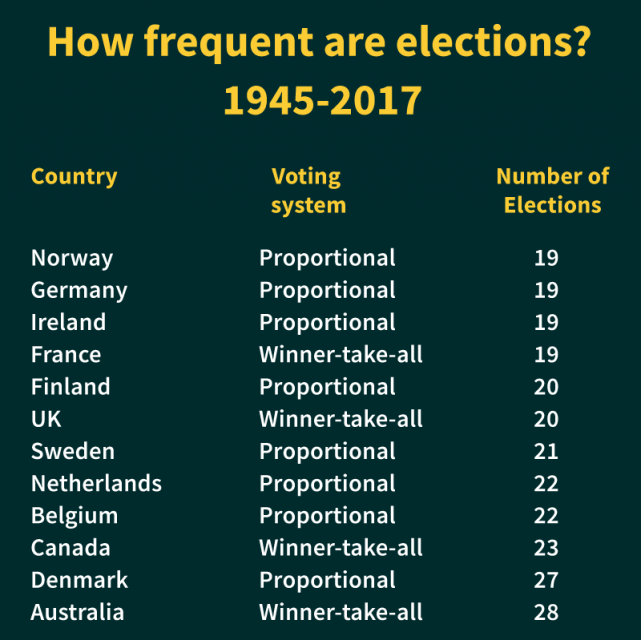
. The proportional system tends to give more leverage to the smaller more extreme left and right. Proportional representation differ from the winner takes all system because in proportional representation each faction gets some slots depending on some parameters whereas in the winner takes all system the loser has nothing as the winner enjoys all. Steer towards proportional representation.
Proportional representation sometimes called simply PR is defined as an electoral system in which parties gain seats in proportion to the number of votes cast for them This is different than a direct system of representation where each seat is put up to a vote for a specific candidate regardless of what party to which they associate. Proportional representation differ from the winner takes all system because in proportional representation each faction gets some slots depending on some parameters whereas in the winner takes all. Winner-take-all elections may take the form of single-winner or multi-winner elections while proportional representation elections are necessarily multi-winner though they may combine single-winner elections with multi-winner or compensatory seat elections.
Winner-take-all systems elect the candidates who receive the most votes thereby allowing 501 of voters to win 100 of representation. The other is a proportional-representation system. The winner of each district is awarded one electoral vote and the winner of the state-wide vote is then awarded the states remaining two electoral votes.
Proportional representation differ from the winner takes all system because in proportional representation each faction gets some slots depending on some parameters whereas in the winner takes. Weve all grown up with a system where we elect members of our legislatures one at a time in small districts with the winner being the candidate with the most votes. The difference between a proportional system and a winner-takes-all system is in the amount of representation the minority gets following a vote.
But it means that votes for the losers are well lost. Winner-take-all voting systems among which are plurality and two-round runoff systems hold as their. Here no votes are lost because all.
Few votes are wasted more parties can gain seats in the legislature and fairness is emphasized because seats are apportioned according to the vote totals that each party actually receives. Proportional representation multi party system is better than winner takes all two party system. Instead of a winner-take-all.
The candidate who won the preference vote automatically won the support of all delegates chosen at the primary is the winner takes all system and the proportional representation is an candidate who wins at least 15 percent of the votes cast in a primary get the number of that States Democratic convention delegates. This method has been used in Maine since 1972 and Nebraska since 1996 though since both states have adopted this modification the statewide winners have swept all of the states districts in every election except 2008 and. Posted In a proportional representation system seats are assigned in the legislature in proportion to the votes cast.
If a party gets 40 of the vote they should get 40 of the seats. The candidate who won the preference vote automatically won the support of all delegates chosen at the primary is the winner takes all system and the proportional representation is an candidate who wins at least 15 percent of the votes cast in a primary get the number of that States Democratic convention delegates. Which one you prefer is something of a subjective judgment call.
We in the United States are used to single-member district winner-take-all style of elections. Proportional representation differ from the winner takes allsystem because in proportional representation each faction getssome slots depending on some parameters whereas in the winner takesall. In PR wasted votes may be 10 or less because voters from every party are able to win representation in these large multi-member districts.
Proportional representation systems have certain advantages over the winner-takes-all method. How does proportional representation differ from the winner take all system. There are a few apparent differences between a winner-take-all system and a proportional representation system.
Government Exam 3 - Chapter 10. Proportional representation systems allow like-minded groupings of voters to elect representatives in proportion to their share of the vote. 0 Comments Add a Comment.
Under our non-proportional voting system a party can win a majority of seats and all the power with far less than half the popular vote. Potential candidates who dont feel they can pass the winner-take-all 50 percent threshold might find they are known enough to have a shot at winning 20 percent of the vote. I once lived in a country thst switched from a first past the post electoral system to a proportional representation system.
Government Exam 3 Chapter 8-11. In the US 30 40 or more of votes are wasted cast for candidates who lose. Proportional representation PR is a principle that says the percentage of seats a party has in the legislature should reflect the percentage of people who voted for that party.
Proportional-representation voting and winner-take-all voting each have pros and cons and neither one is perfect. How does proportional representation differ from the winner -take all system. The candidate who won the preference vote automatically won the support of all delegates chosen at the primary is the winner takes all system and the proportional representation is an candidate who wins at least 15 percent of the votes cast in a primary get the number of that States Democratic convention delegates that corresponds to their share of the primary vote.
Deltass from OP In a two party winner-takes-all system you cant vote for a third party you agree more with because that is subtracting a.

First Past The Post Vs Proportional Representation Youtube

What If Your Vote Had More Impact Winnipeg Free Press

Proportional Representation Reimagining American Elections To Combat Gerrymandering Democracy Docket

Fair Vote Canada On Twitter The Two Families Of Voting Systems Winner Take All And Proportional Representation Https T Co Jbmfskfnaa Twitter
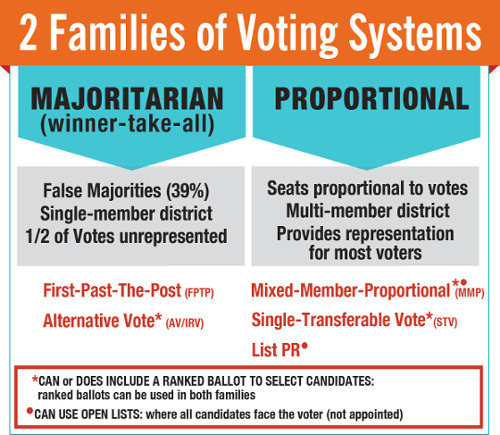
Electoral Reform And Labour The Bullet

Electoral Systems 101 Fairvote

Fair Vote Canada Representation Equitable Au Canada There Are Only Two Families Of Voting Systems Winner Take All Majoritarian Or Proportional Take A Look At Our Evidence Paper And See Why We Advocate For

Make Votes Matter On Twitter Our Winner Takes All Electoral System Was Designed For Two Parties But What Happens When More Parties Are Introduced Join The Movement For Proportional Representation Https T Co Pgq18g78ub Makevotesmatter Https T
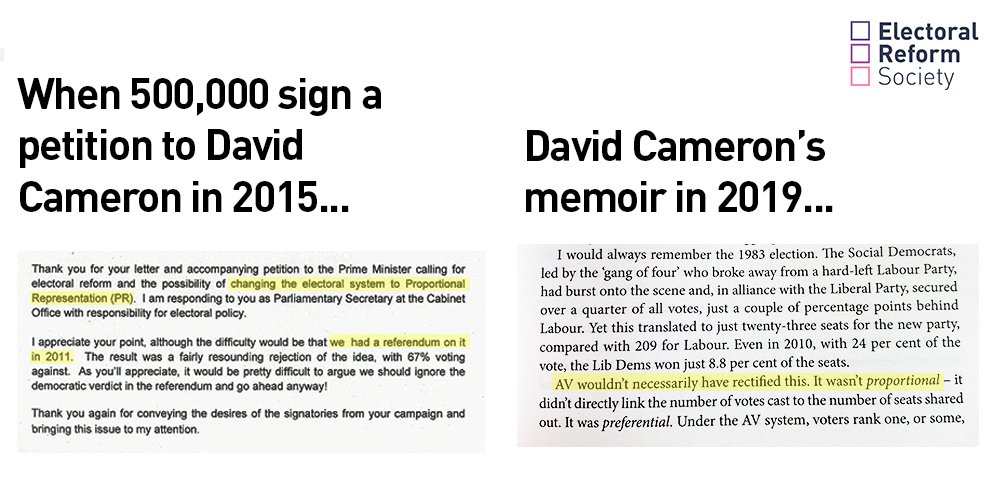
Was There A Referendum On Proportional Representation Electoral Reform Society Ers
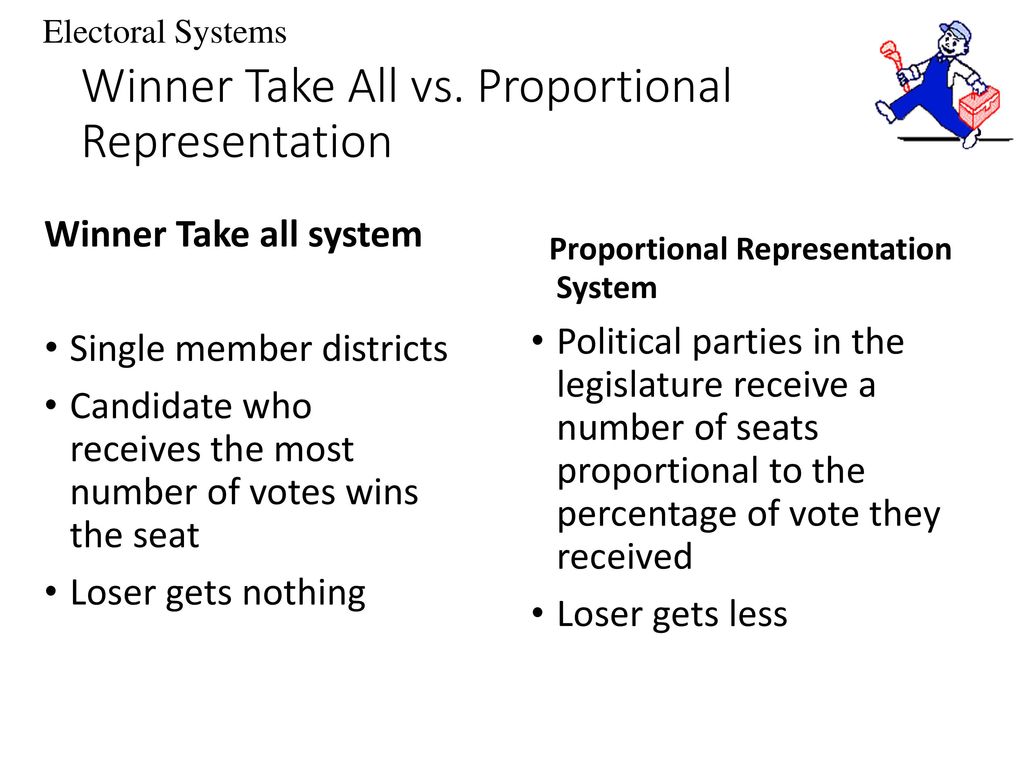
The Danger Of Factions I Have Already Intimated To You The Danger Of Parties In The State With Particular Reference To The Founding Of Them On Geographical Ppt Download
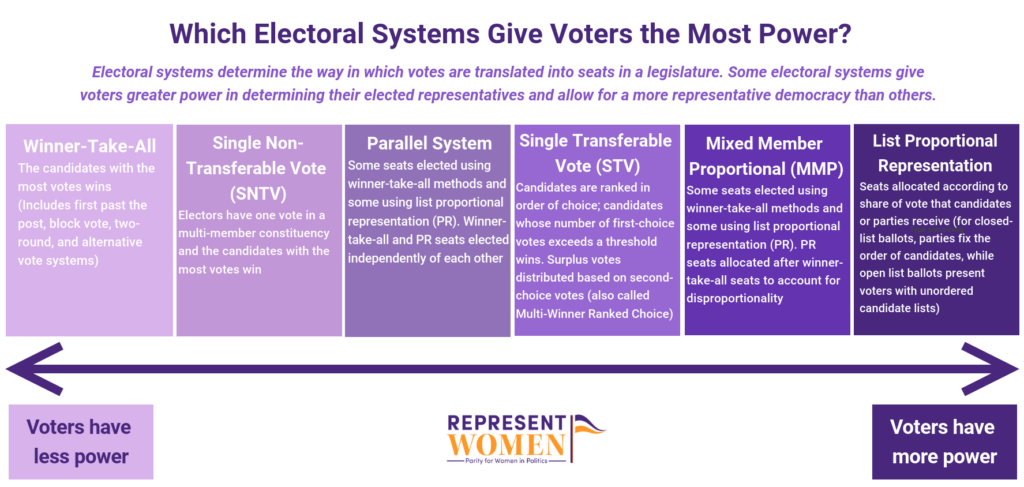
The Impact Of Angela Merkel What 16 Years Of Women S Leadership Can Get You Ms Magazine

Egypt And The Winner Take All Distortion Fairvote

Handout C Proportional Or Single Member Districts Bill Of Rights Institute

Proportional Not Popular Reforming The Electoral College
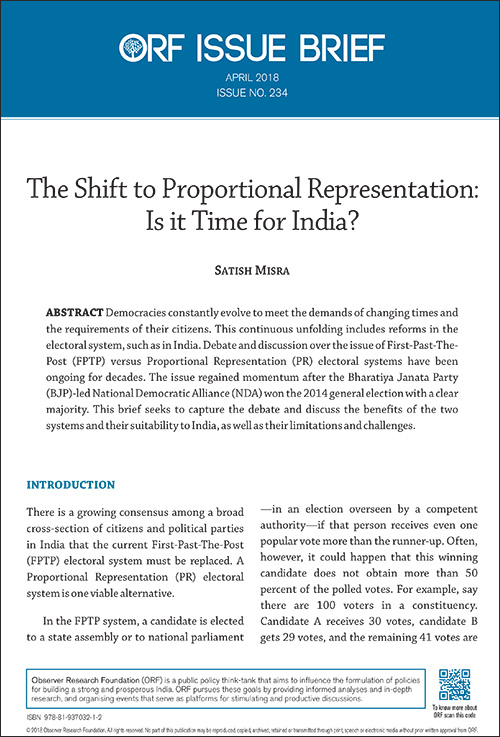
The Shift To Proportional Representation Is It Time For India Orf


Comments
Post a Comment